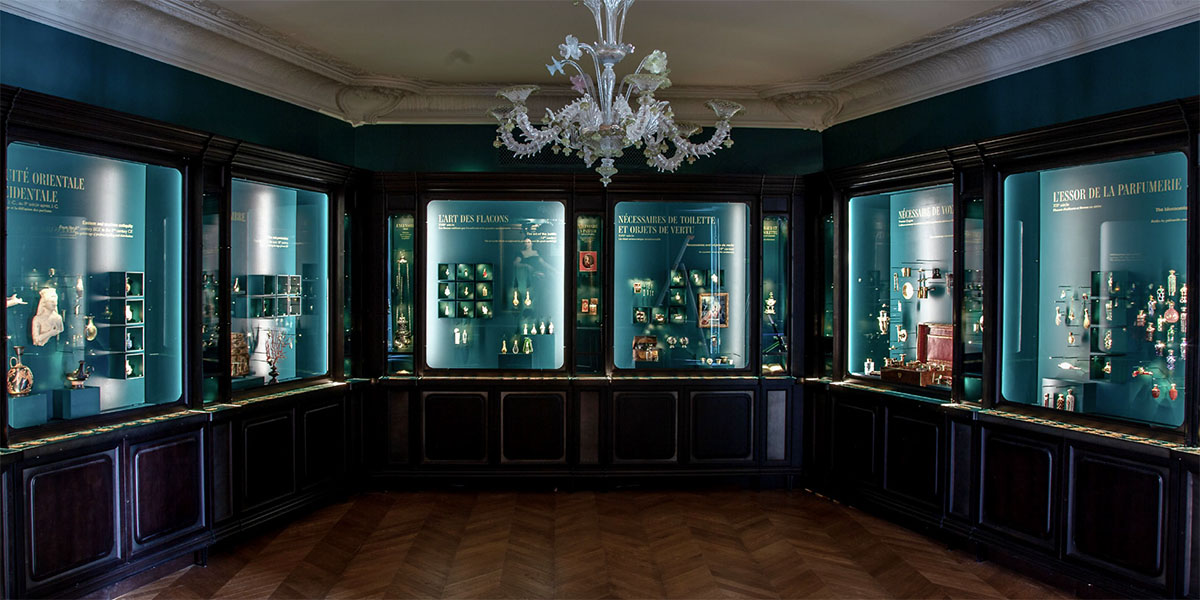Amongst the objects of our daily lives, perfume is most likely one of the most ancestral. Its history started in the antiquity and continues today. In this room, you can see the story of perfume unroll in front of you. Throughout history, perfume had many functions, the three main ones being to honor the gods, fight diseases, and seduce. This is what we commonly call the three C’s rule: Cult, Cure, Charm.
THE EGYPTIANS
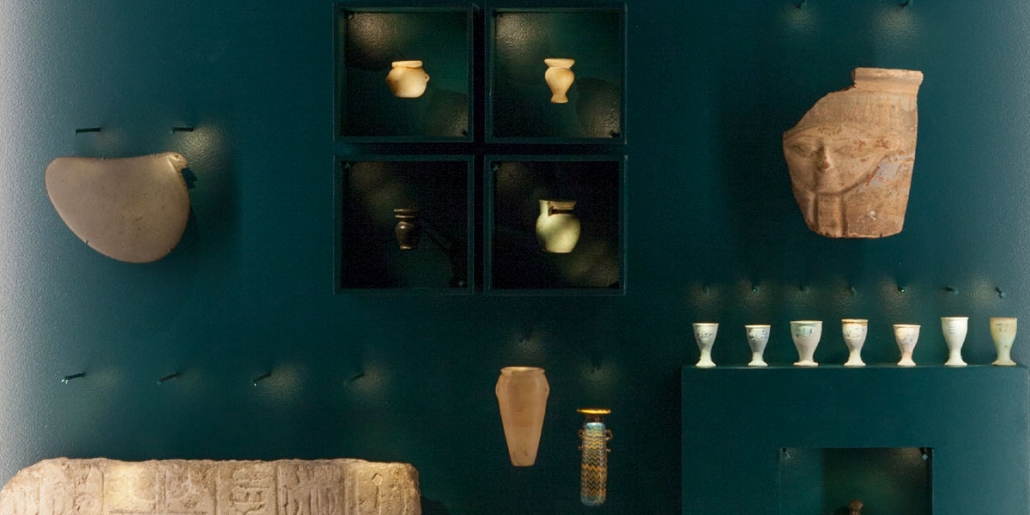
When counting the story of perfume, we can start with the Egyptians. They were the first perfumers and not only did they were makeup, but perfume was also part of daily lives.
They wore it in the shape of a little cone of perfumed fat or wax that they put on their heads and that would slowly melt in the sun and perfume their hair or wig.
Perfume was also used for religious purposes. The seven ointment flasks that you can see at number 10 contained balms and unguents used for mummification. All seven needed to be used together or else the person being embalmed couldn’t pass on to the spirit realm.
EASTERN AND WESTERN ANTIQUITY
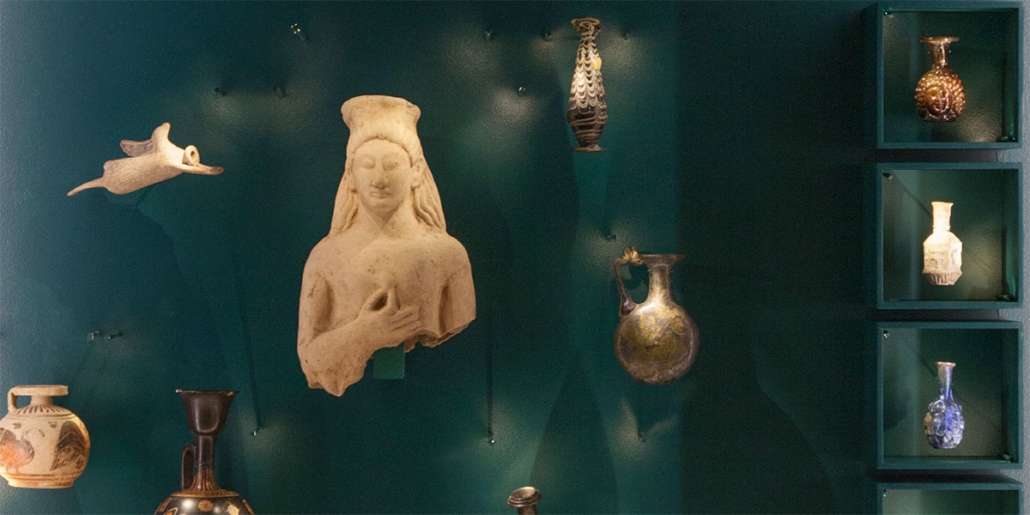
Through the Mediterranean Sea, the Greek discovered perfume in Egypt. As great tradesmen, they brought it back home and their love for beautiful and well groomed bodies made perfume very popular in their culture. They used a different fragrance for each part of the body and coated themselves in perfumed oil after bathing or for special events, like the romans after them. The Greeks used to keep their perfume in terracotta containers like the aryballoi at n°1 and the alabaster at n°2.Terracota being porous, it absorbs the liquid and the scent, so when the Romans finally mastered glass-blowing, they started to store their perfumed oils in glass bottles. You can admire some to the right of the showcase, and you can take time to look at n°8 that is adorned with a depiction of Janus, the Two-faced god.
POMANDERS
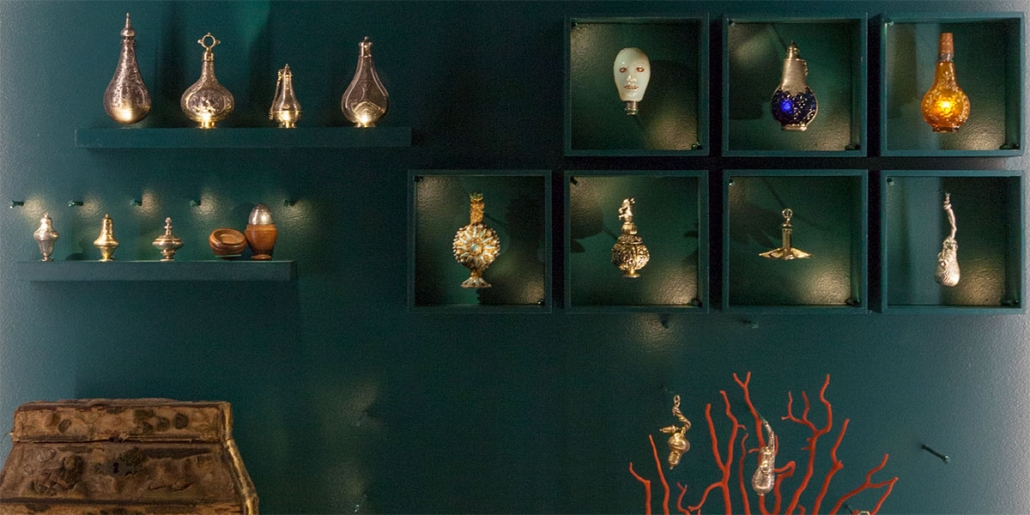
We are now ready to move to the next showcase on the right.
In the Middle Ages, people started to use perfume to protect themselves from diseases as they thought plagues can be transmitted through bad smells. The nobility carries pomanders, also called apple of amber, like objects number 9 and 15, filled with solid essences. This was not just a way to repeal diseases but also to express one’s wealth, as most pomanders were made of precious materials such as silver, or gold.
By the Renaissance, though, people in Europe have stopped using water in their hygiene routines. First because the church discourages going to public baths deemed indecent. Second because doctors thought water transmited diseases. Therefore, people started to use perfume on a piece of fabric and rubbed it on their skin to clean. Alcohol-based perfume was born. The first one was created in 1370 for the Queen of Hungary: according to the legend, it was gifted to her at the age of 72. After using it thoroughly, she regained the health, fitness and beauty from her twenties.
THE ART OF BOTTLING
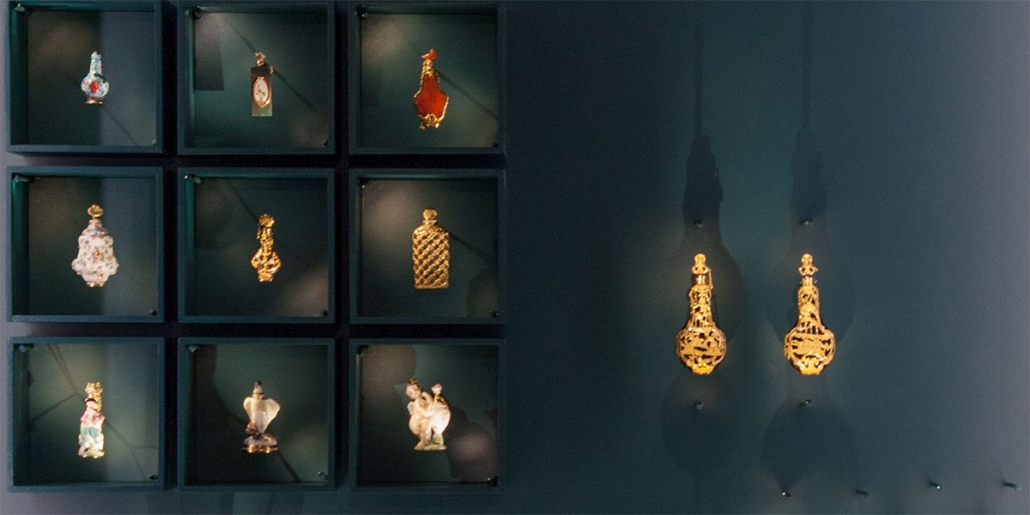
You can now move to your right to the next showcase.
In the 18th century, liquid perfume triumphs, and it is carried everywhere by the nobles and bourgeois. The bottles exhibited in this showcase reflect the fashion for perfume bottles during that period. These bottles are real jewels, refinement was brought to its height: they are treasures of crystal, porcelain and gold. Some of them even carry secret messages, will you be able to see them?
You can discover one on object n°6: this bottle was made in England out of porcelain, gold, enamel and agate. Its represents a bird and has the following inscriptions: “Fidelity” around its heart and on its base “who neglects loses me”.
It should also be mentioned that at this time, hygiene remained minimal. For the record, at the court of Louis XIV, we only washed a few times a month or a year. Indeed, the story says that the Roi Soleil or Sun King would have washed only 5 times in 71 years of life!
MARIE-ANTOINETTE
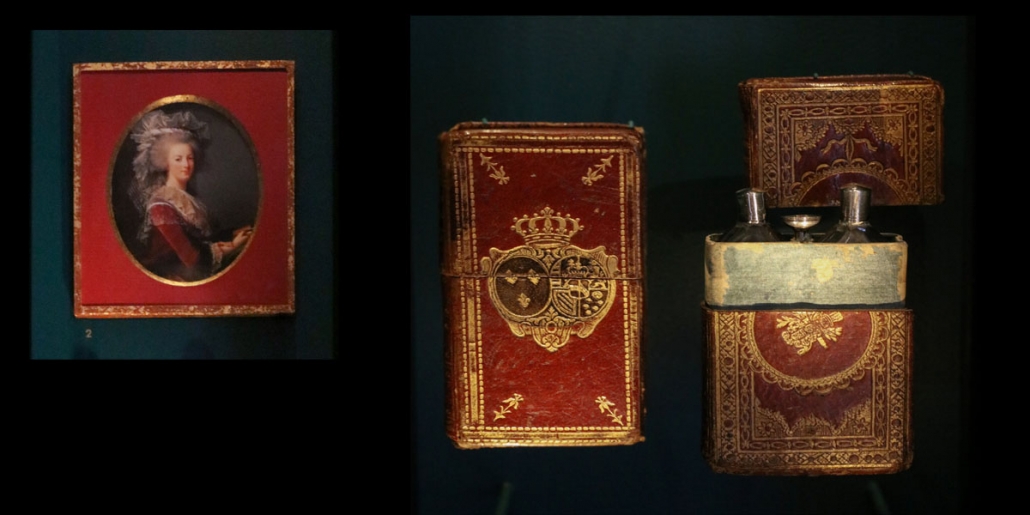
At the court of Marie-Antoinette and Louis XVI, the scents became more delicate, reminding the flowers from the Trianon gardens. in the central showcase, you can discover the perfume set that Marie-Antoinette liked to offer. It is a perfume case in the shape of a book covered in red Morocco and decorated with the arms of Queen Marie-Antoinette in gold and “Pensée chret” on the edge. There are two cut-glass bottles with silver caps inside.
TOILETRIES & VIRTUE ITEMS
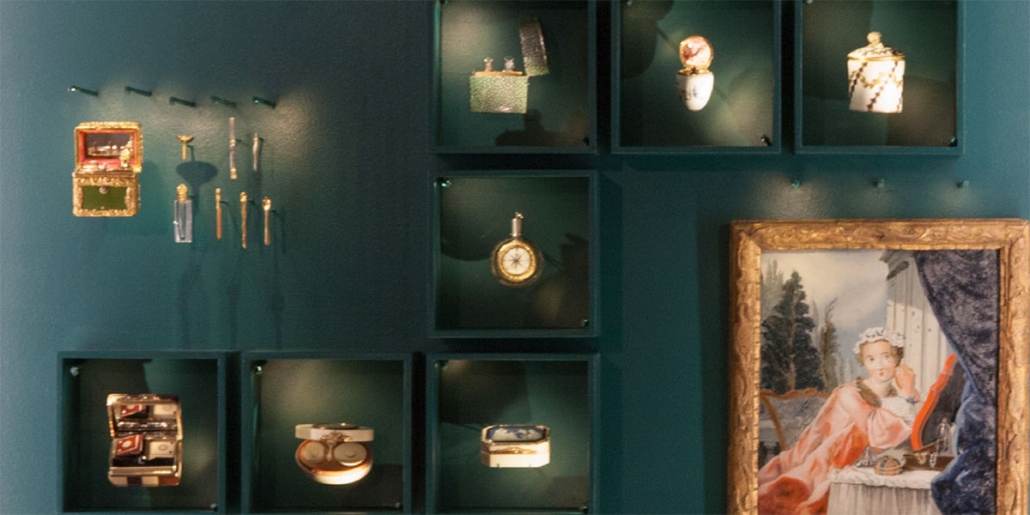
Continuing to your right, you will be able to admire the toiletries and virtue objects in the next window.
These small luxurious boxes, made from precious materials, contained all sorts of small beauty-related objects. Fragonard offers you discover the very secret interior of these boxes: look at object n°1, it is a gold and green lacquered pocket set which includes thirteen toilet utensils (crystal bottle, tongue scraper, ear pick spoon…) and a mirror. In this showcase, you will also find other beauty objects such as perfume boxes, make-up and lipstick boxes, fly boxes, make-up mortars, ointment pots, etc.
Let’s dwell for a moment on the mouches, also called flies. Perhaps you have already heard of them? The object presented here in n°7 is a boite à mouches or fly box which contains small pieces of taffeta or black velvet soaked in perfume like fake beauty spots. They were placed on the face to highlight the whiteness of the complexion and camouflage imperfections due, for example, to smallpox. Subsequently, they will be used to give indications on the mood of their wearers. For example, a fly at the corner of the eye means “the passionate”, above the lips “the coquette personality”, on the chin “the discreet” and on the chest “the generous”.
TRAVEL SETS
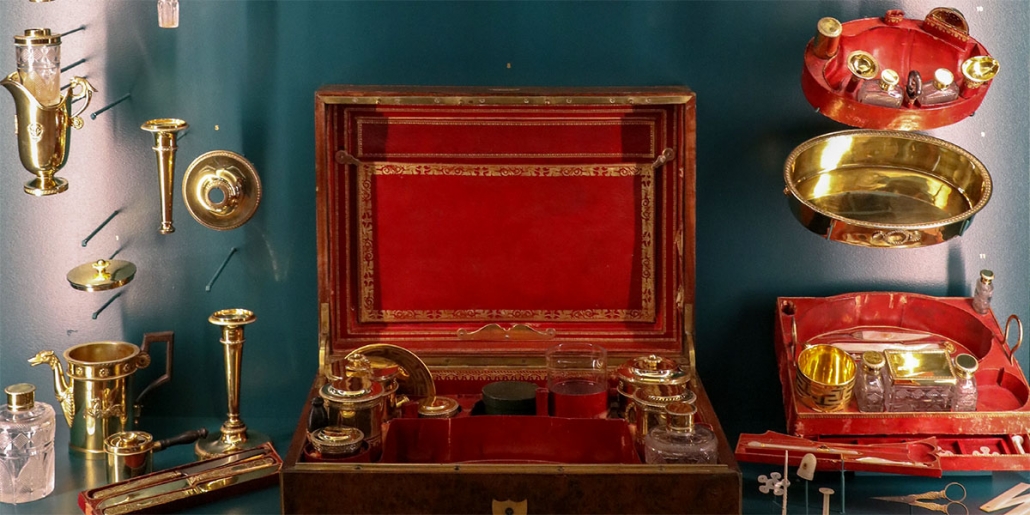
Now look a little further to your right and discover this magnificent vermeil travel necessaire, a remnant of the time when aristocrats began to travel. This box was a gift from the Duc de Berry to his first wife, Amy Brown. This travel set is complete which makes it priceless. It contains more than 100 objects including a bottle, brush, mirror, teapot, coffee pot, sugar bowl, milk jug, sewing kit, and many more.
POTS POURRIS
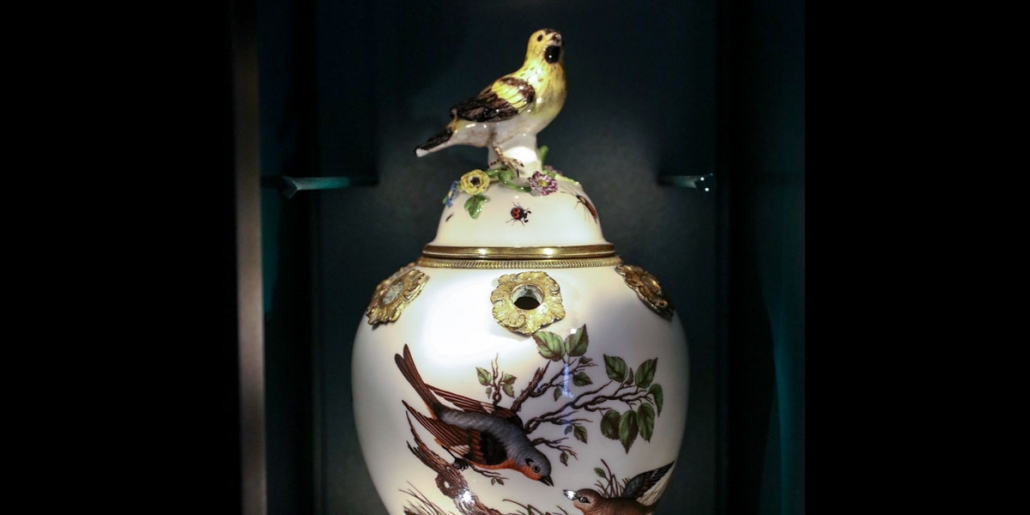
Now come closer to the potpourri display case.
It was in the 18th century that this refined object was found in homes. Very fashionable at the time, any distinguished person had to have it to perfume their interior. Potpourri, or rotten pot, is a mixture of dried plants and flowers chosen for their scents and aromas. This mixture is placed in the pot you can see here. Small circular openings are present on the lid or in the neck and allow smells to escape. Here, our pot is made of porcelain, but it could be made from different materials.
THE RISE OF PERFUMERY IN THE 19TH CENTURY
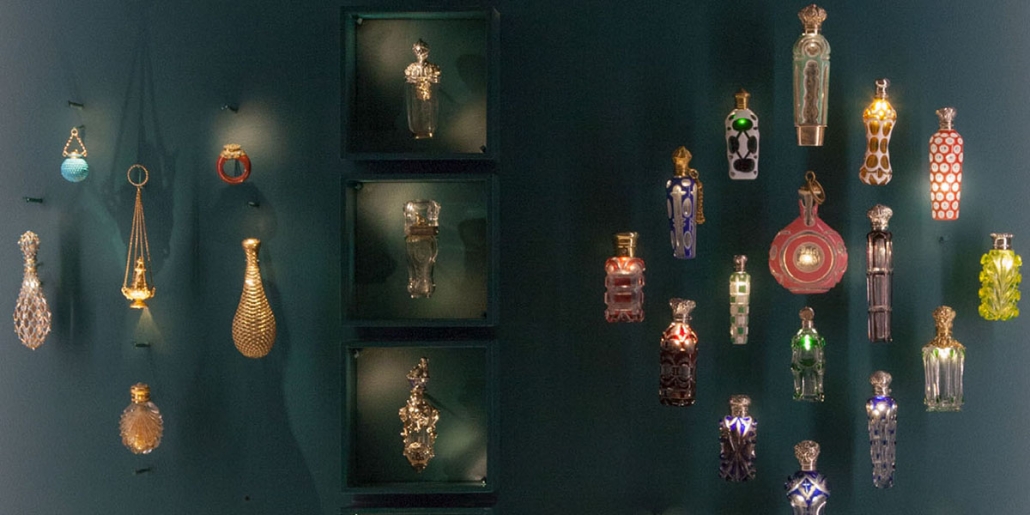
In the 19th century, with the rise of the bourgeois, perfumes were more widely used. The upper class attended balls, receptions, operas and wore refined fragrances expressing their wealth. Even the emperor had perfumes composed for his mistresses by the greatest perfumers. People wore perfume like a jewel, the bottle acting as a showcase.
Note the refinement and originality of bottle n°7 in the shape of a swan’s head, bottle n°5 in the shape of a ring or even bottle n°6. It has a spyglass in its center, very useful for a closer look at singers or actors when going to the opera or the theater.
MODERN PARFUMERY
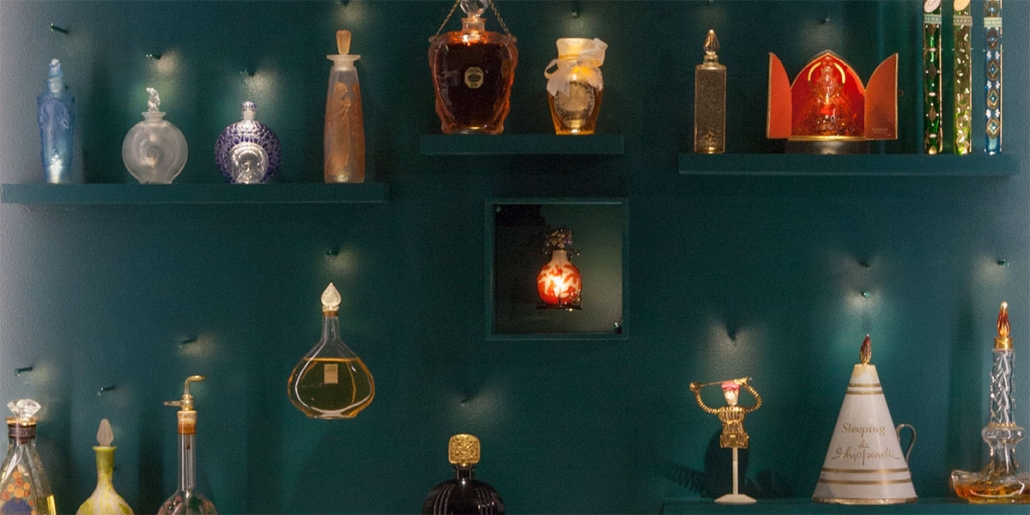
Further to your right, we will discover the bottles from the 20th century.
At the beginning of the 20th century, thanks to the industrial revolution and the invention of synthetic notes, perfume becomes a common good and therefore becomes an everyday ritual. To seduce their new customers, perfumers call on the know-how of master crystal makers. As you can see many of the bottles displayed here were made by René Lalique, one of the greatest master glassmakers of his time. He is behind the magnificent bottles for Maison Fragonard which are exhibited here in number 8 and number 10. From n°14 to 20, you can also look at some bottles imagined by Elsa Schiaparelli, a designer known for her very artsy bottles. She was also very good friend of Salvador Dali, who designed object n°21 for her. Can you guess what is it? It’s actually a powder box, in the shape of a telephone dial.
BELLE DE NUIT BOTTLE
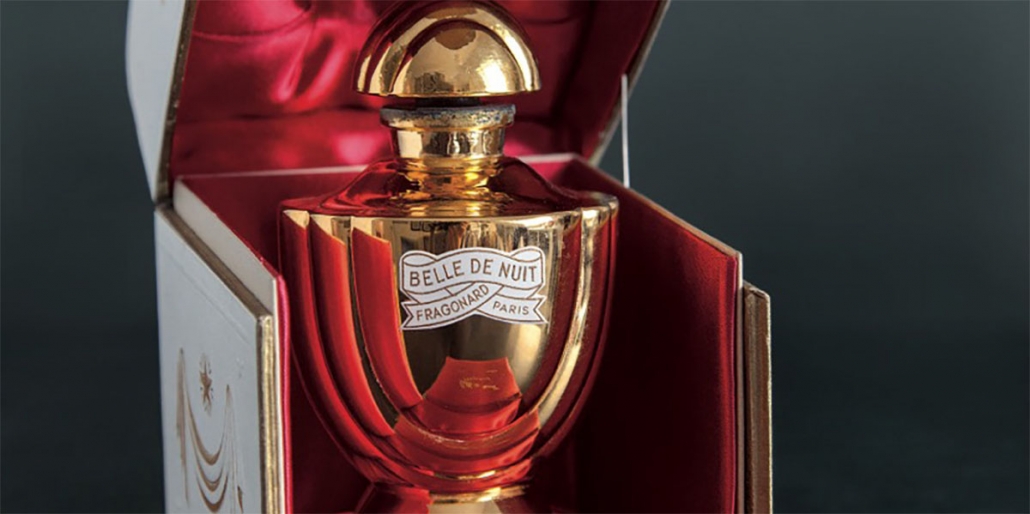
Finally, let’s end our journey through time and the history of perfume looking at the last showcase. It contains a bottle of Belle de nuit, Fragonard’s emblematic fragrance, created in 1946 and still one of our bestsellers to this day.
We will be happy to help you smell it at the end of the visit and judge its incredible timelessness.
We will now go to the next room. Do not forget to scan the QR code on your right in the doorway to discover the manufacturing secrets.
FRAGONARD PARFUMEUR
A family business with ancestral know-how, Parfumerie Fragonard was founded in 1926 in the town of Grasse.
THE FRAGONARD BLOG
Get all the latest news about our factories and museums and experience the world of Fragonard.

